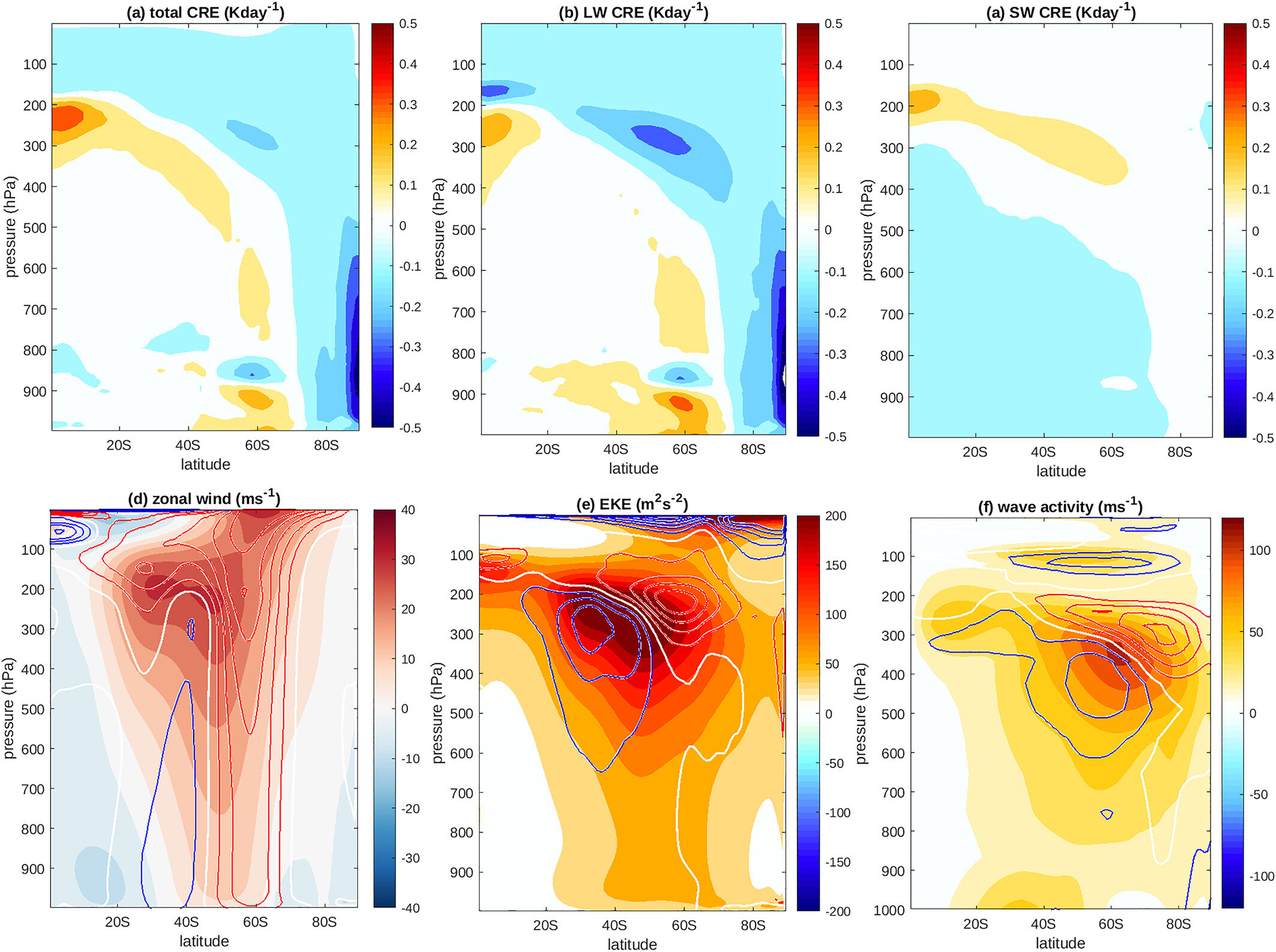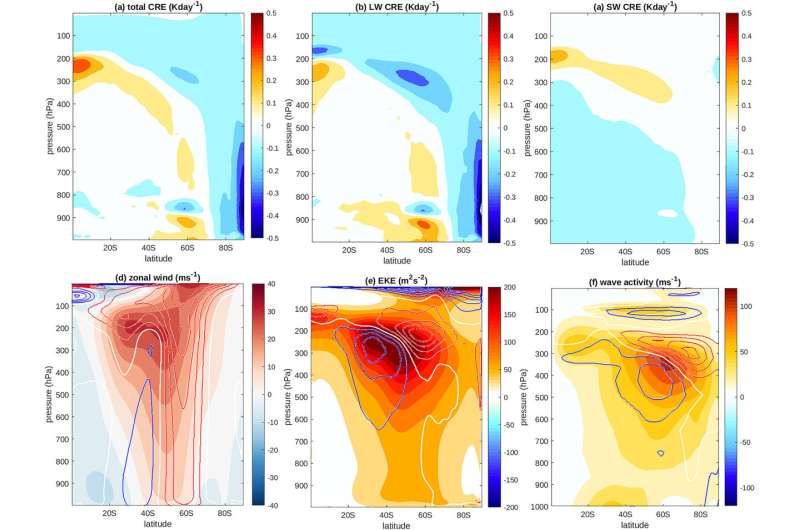

The Southern Annular Mode (SAM), with an iconic dipolar zonal wind pattern centered around the axis of the storm track, is the most dominant mode of variability orchestrating the weather and wind from the subtropics to the poles. Its origin, maintenance and feedback have been one of the central themes of atmospheric dynamics. But what role the clouds play in the life cycle of the annular mode remains largely unknown until now, while the wind pattern associated with SAM has long been observed to organize the distribution of cloud in the storm track.
The work is published in the Journal of Geophysical Research: Atmospheres.
This study implemented a cloud locking technique into the atmospheric component of Department of Energy’s (DOE’s) Energy Exascale Earth System Model (E3SM), replacing the cloud fields that are radiatively active at every time step that the radiation module is called, whereby turning off the interaction between cloud and other dynamic and thermodynamic quantities. Careful feedback analysis reveals that the cloud variability organized by the SAM radiatively acts as a brake to the propagation of the AM.
Cloud and its radiative effect are among the determining processes for the energy balance of the global climate; they are also the most challenging processes for the climate models to simulate, hence a major source of model bias and model uncertainty. The identified brake effect of the cloud on the propagation of the SAM implicates inaccurate representation of the cloud to be an important source of model bias and uncertainty in the simulated spatiotemporal characteristics of the AM. Capturing the correct sign of the cloud feedback to the AM can be a valuable metric for measuring model fidelity.
The SAM is the most dominant natural mode of variability in the midlatitudes of the Southern hemisphere (SH). However, both the sign and magnitude of the feedback from the diabatic processes, especially those associated with clouds, onto the SAM remain elusive. By applying the cloud locking technique to the E3SM atmosphere model, this study isolated the interactive cloud radiative effect (CRE) and the related feedback to the SAM was analyzed in both single-empirical orthogonal function (EOF) and cross-EOF frameworks.
While the magnitude of the CRE feedback appears to be secondary compared to the feedback from the dry and other diabatic processes, the indirect CRE effects through the interaction with other dynamical and thermodynamical processes appear to play as important a role as the direct CRE in the life cycle of the SAM.
The cross‐EOF analysis further reveals the obstructive role of the interactive CRE in the propagation mode of the SH zonal wind both directly through the CRE wave source and indirectly through modulating other diabatic processes. As a result, the propagation mode becomes more persistent and the SAM it represents becomes more predictable when the interactive CRE is disabled.
More information:
Jian Lu et al, The Role of Cloud Radiative Effects in the Propagating Southern Annular Mode, Journal of Geophysical Research: Atmospheres (2024). DOI: 10.1029/2023JD040428
Provided by
Pacific Northwest National Laboratory
Citation:
Cloud as stumbling block for the propagation of the Southern Annular Mode (2024, September 16)
retrieved 16 September 2024
from https://phys.org/news/2024-09-cloud-stumbling-block-propagation-southern.html
This document is subject to copyright. Apart from any fair dealing for the purpose of private study or research, no
part may be reproduced without the written permission. The content is provided for information purposes only.